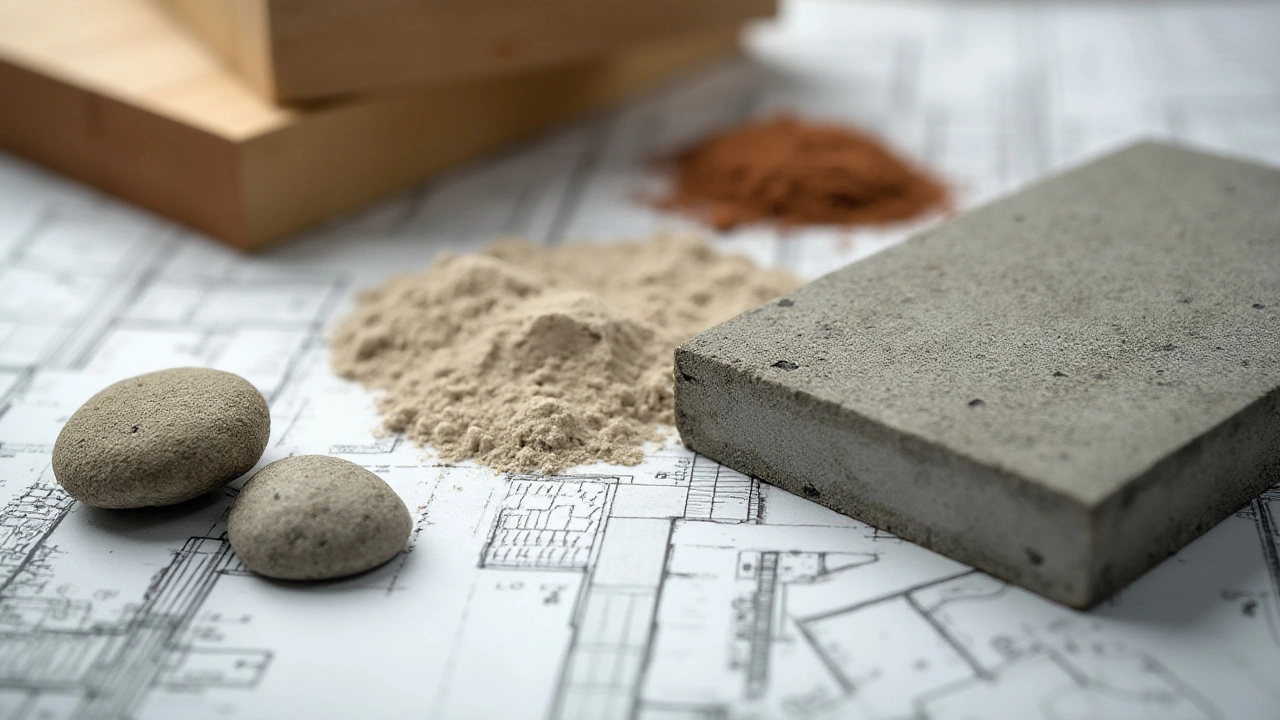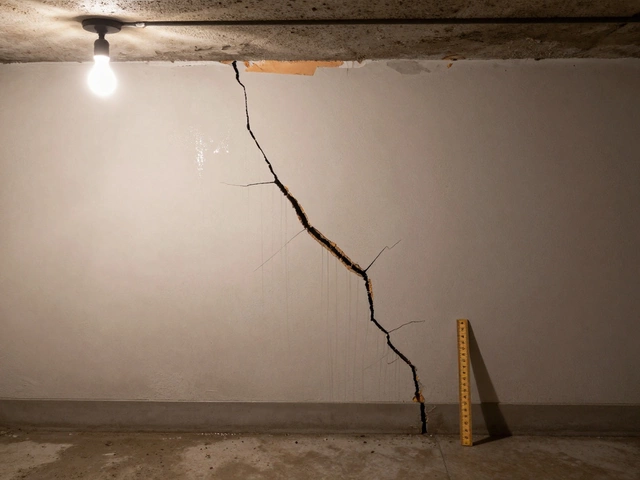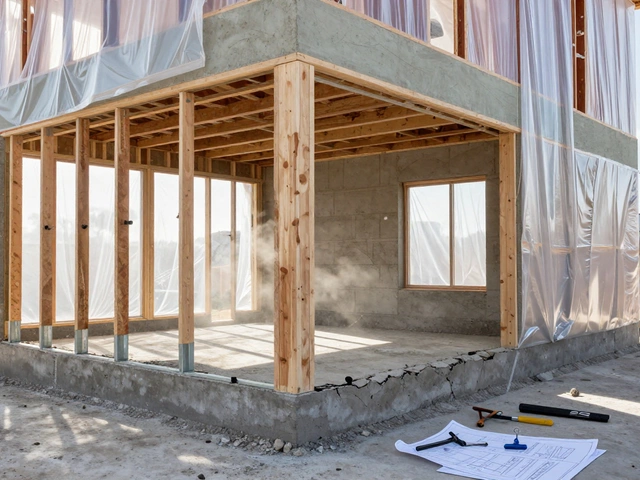In the world of construction, the choice of materials plays a crucial role in determining the success and sustainability of a project. While age-old materials like wood and stone still find their place, modern advancements have introduced options that enhance efficiency and reduce environmental impact.
This journey through the realm of construction materials will explore the traditional and new, giving you insights into what's shaping today's construction landscape. Whether you're renovating a home, designing a skyscraper, or simply curious about the materials that frame our world, this exploration aims to inform and inspire.
- Traditional Building Materials
- Innovative Materials in Modern Construction
- Sustainable and Eco-friendly Options
- Tips for Choosing the Right Materials
Traditional Building Materials
Traditional building materials have been the cornerstone of architecture for centuries. They have shaped not only individual structures but entire cultures and the course of human history. Let's start with wood, one of the most abundant and versatile materials available. It's been used for everything from structural frameworks to ornate carvings. Wood is valued for its ease of use, sustainability, and ability to be sourced locally, reducing transportation costs. It remains a favored choice in modern construction, particularly for residential projects, due to its insulating properties and aesthetic appeal, making spaces feel warm and inviting.
Another stalwart in the construction world is stone. Stone structures have stood the test of time, quite literally acting as the silent witnesses to history. Take the Pyramids of Giza or the Great Wall of China for example. Stone is naturally durable, resistant to weathering, and exceptional at thermal mass, which helps in maintaining stable indoor temperatures. Quarried locally in many regions, it also presents a reduced environmental impact when considering transportation and carbon footprint. However, stone can vary greatly in terms of hardness and workability, which impacts its use today compared to lighter, more flexible materials.
Bricks, often seen in the form of uniform rectangular blocks, have been integral to human construction since the times of ancient Egypt. Comprising mainly of clay, bricks offer a significant advantage in terms of uniformity, strength, and ease of use in various climate conditions. They are known for their fire resistance and ability to last for centuries without significant degradation. A 2019 study in The Journal of Construction and Building Materials highlighted how the incorporation of fly ash, a byproduct of coal combustion, improves both the sustainability and performance of brick materials, pointing out that innovation is not a foreign concept even in traditional construction materials.
"Architecture starts when you carefully put two bricks together. There it begins," — Ludwig Mies van der Rohe, a renowned architect who emphasized the simplicity and strength found in traditional materials.
Concrete, though more modern than stone or wood, also deserves its place among traditional building resources due to its extensive use throughout the 20th century—a reliability rooted in its origins. In its basic form, concrete is a mixture of cement, sand, water, and aggregates, but its versatility is legendary. The Pantheon in Rome boasts the largest unreinforced concrete dome in the world and has stood for nearly 2000 years, showcasing the enduring strength and adaptability of this material.
Finally, metals like iron and steel transformed how we view and build structures. The Industrial Revolution sparked a new era of building practices with the introduction of structural iron, and later, the widespread use of steel. These materials brought enhanced strength and flexibility to designs, allowing for the creation of towering skyscrapers and expansive bridges. However, as the world continues to tilt towards sustainable living, the importance of traditional materials is resurging. These materials not only bring aesthetic and historic value but often embody principles of sustainability beloved in today's eco-conscious building environments. Choosing the right materials can greatly influence the functionality, feel, and environmental impact of a structure.

Innovative Materials in Modern Construction
Embracing new technologies in construction is essential as sustainable practices and improved energy efficiency become focal points in modern building projects. Among these innovations, recycled plastics are making their mark. Recycled plastic lumber offers a robust, low-maintenance alternative to traditional wood, providing longevity without sacrificing aesthetics. Crucially, it contributes to reducing landfill waste, thus playing a substantial role in promoting environmental health. Another imaginative material is self-healing concrete, which infuses traditional concrete with bacteria that generate limestone to repair cracks, enhancing the longevity of structures while diminishing maintenance costs.
Photovoltaic glazing epitomizes the synergy between innovation and energy efficiency. By embedding solar cells within building materials like glass, structures can harness solar energy seamlessly. This dual-purpose solution not only saves on heating and lighting costs but also supports the broader shift towards renewable energy sources. An equally impressive material is aerogel, known colloquially as "frozen smoke." Its lightweight and highly insulative properties make it a game changer in both thermal and acoustical insulation. Although a pricier choice, its long-term energy savings potential in minimizing heat loss is considerable.
"Innovation is the unrelenting drive to break the status quo and develop anew where few have dared to go." — Steven Jeffes, Innovation Expert
One must not overlook engineered timber products like cross-laminated timber (CLT). Favored in eco-conscious projects, CLT offers a sustainable and cost-effective alternative to steel and concrete, reducing the carbon footprint associated with manufacturing while maintaining structural integrity. Such innovations underscore how the construction industry can pivot towards a sustainable future. Hybrid materials leverage unique properties from various resources, harnessing benefits of each. Combining natural fibers, like flax, with polymers yields composites that are lightweight yet incredibly strong.
The advent of 3D printing technology invites speculation about what's next in construction. By allowing on-site manufacturing of components, using special concrete mixtures or polymers, 3D printing significantly reduces waste. Notably, its flexibility lets designers execute complex or bespoke designs that seemed impractical traditionally. The variety and versatility of advanced materials continue to evolve, setting new standards within the industry. A key takeaway for builders is the capacity of these materials to not only enhance the structural and aesthetic value of buildings but to align with sustainable materials strategies.
Here’s a quick look at the current statistics reflecting the impact of some innovative materials in construction:
| Material | Energy Savings | Carbon Footprint Reduction |
|---|---|---|
| Recycled Plastics | 25% | 20% |
| Self-Healing Concrete | 15% | 30% |
| Engineered Timber | 30% | 50% |
While considering these innovations, builders and architects recognize the importance of an integrated approach, combining new materials and technologies holistically within their projects. The modern construction landscape demands an emphasis on the potential of new materials to revolutionize not just the buildings we live and work in, but also the world around us. The choices we make today will shape the infrastructure of tomorrow, prompting a thoughtful balance between innovation, tradition, and ecological responsibility.

Sustainable and Eco-friendly Options
In today's construction world, embracing sustainable and eco-friendly options has become more than just a trend; it's a responsible choice that directly impacts our planet's future. The shift towards green building materials not only helps in conserving the environment but also promotes healthier living spaces for occupants. A study by the U.S. Green Building Council suggests that green buildings can reduce energy use by 30%, leading to significant cost savings over time. An increasing array of alternatives assists architects and builders in achieving their green goals.
One popular choice for sustainable construction is sustainable timber, which refers to wood sourced from responsibly managed forests. These forests ensure that timber harvesting does not disrupt local ecosystems and that trees are replanted to maintain natural resources. Another compelling innovation is self-healing concrete. This material contains limestone-producing bacteria that activate when water seeps into cracks, effectively repairing itself and extending structural lifespan, thus reducing the need for frequent repairs. Consequently, self-healing concrete minimizes waste and the need for new construction materials.
Recycled plastics offer a striking contrast to traditional building materials. By re-purposing plastic waste into robust, versatile bricks or tiles, builders can reduce landfill impact while crafting structures that are stylish and sturdy. Another innovation earning its stripes in the green market is "green concrete," which incorporates industrial by-products such as fly ash or silica fume into its mix, significantly decreasing its environmental footprint. In some cases, such alternative materials can improve the strength of constructions.
"Adopting eco-friendly materials in construction is not just a step towards sustainability; it's an investment in our future." - International Green Construction Code
Straw bales and rammed earth are other alternatives gaining traction, especially for residential projects aiming for a rustic yet efficient aesthetic. Straw acts as an excellent insulator, which can drastically cut down heating and cooling needs, reducing energy consumption. On the other hand, rammed earth walls, formed by compacting layers of earth in formworks, provide remarkable thermal mass, helping regulate indoor temperatures naturally. Coupled with modern engineering solutions, these traditional methods deliver impressive results.
As more people gravitate towards sustainable living, the demand for green certifications like LEED (Leadership in Energy and Environmental Design) has surged. These certifications offer a structured approach to evaluating the environmental impact of buildings, encouraging the employment of techniques that minimize waste, reduce pollution, and ensure sensible use of building materials. While the initial costs might seem higher for green materials, the long-term savings and environmental benefits create a compelling case for their adoption in every construction project.

Tips for Choosing the Right Materials
When it comes to selecting the right construction materials for your project, a multitude of factors need to be considered. The wrong choice can lead to increased costs, delays, and even structural issues down the line. One of the primary considerations is the environmental conditions in which the building will exist. Climate can significantly influence material performance; for example, some materials might thrive in humid environments while others may degrade. It is crucial to have a thorough understanding of the local climate, and consulting with regional experts can often provide indispensable insights.
Another critical factor is the intended longevity of the structure. Are you aiming to construct a temporary exhibit or a building meant to withstand decades of use? Temporary structures might lean towards cost-effective and easier to assemble materials like prefabricated panels, whereas permanent constructions typically require more robust and durable materials such as reinforced concrete or steel. As an architect wisely put it, "The durability of a building is often rooted in the materials that give it life."
"The success of any project often hinges on the materials chosen at its inception." – Renowned Architect, Jane McMillan.
Budget considerations will naturally play a pivotal role in your decision-making process. While it might be tempting to opt for the cheapest options available, this can be a shortsighted strategy. Investing in quality materials upfront might appear more expensive initially, but it often results in savings over time due to reduced maintenance costs and greater energy efficiency. Projects budgeted with a future-oriented mindset often feature modern construction methods that incorporate state-of-the-art materials, which, despite their higher initial cost, offer returns in both longevity and resilience.
Aesthetics can't be overlooked either, especially in projects where visual impact is key. The look and feel of the materials chosen can significantly influence the perception of a completed project. Building materials like polished wood, glass, and certain types of natural stone not only serve structural purposes but can also enhance the aesthetic appeal of a construction, ensuring it fits well with its intended visual context. The integration of aesthetic design with functionality is becoming increasingly important in today's building trends.
| Material | Durability (Years) | Cost (Per Unit) |
|---|---|---|
| Reinforced Concrete | 50-100 | $200 |
| Steel | 50-150 | $300 |
| Wood | 10-30 | $80 |
Lastly, consider the sustainability and environmental impact of your material choices. With growing awareness of climate change, there's an increasing push towards using sustainable materials that minimize environmental footprints. Materials like recycled steel or reclaimed wood are becoming popular, as they not only serve their functional purposes but also align with eco-friendly building practices. Incorporating renewable resources and considering the life cycle of materials can make a significant difference in the environmental impact of a project, a consideration that's becoming paramount in modern construction.








